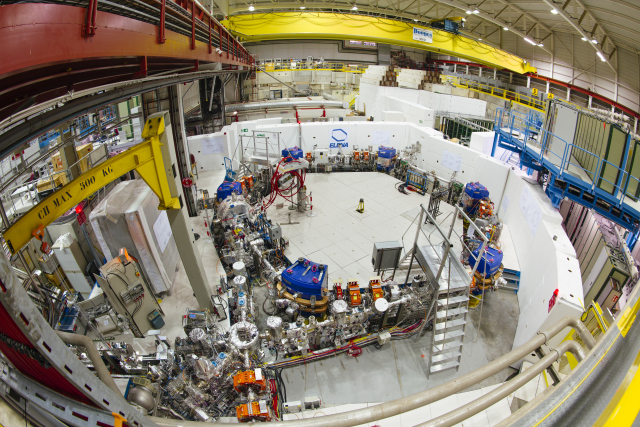On 2 August, the first 5.3 MeV antiproton beam coming from CERN’s Antiproton Decelerator (AD) circulated in the Extra Low ENergy Antiproton (ELENA) decelerating ring.
ELENA is the new decelerator for antimatter experiments. It has a circumference of just 30 meters and will be connected to the AD experiments to improve the conditions for typical antimatter experiments. The slower the antiprotons are (i.e. the less energy they have), the easier it is for the AD’s antimatter experiments to study or manipulate them. However, the AD decelerator can reliably only slow antiprotons down to 5.3 MeV, the lowest possible energy for a machine of this size. The much smaller ELENA ring will reduce this energy by 50 times, to just 0.1 MeV, opening up the possibility for additional experiments, such as GBAR. In addition, the density of the beams will be improved, thus increasing the efficiency with which the experiments can capture the antiprotons in their traps by a factor of 10 to 100. The new decelerator will also enable several experiments to receive antiproton beams simultaneously.
This is not the first time that a beam has circulated in ELENA. The first tests began last November, but this is the first time that antiprotons, the particle type this machine has been conceived for, have been injected. The beam of antiprotons has been successfully injected and it has been observed circulating for a few milliseconds (that is, a few thousand turns of the machine).
The commissioning of the machine will continue over the next coming months with setting-up of several systems such as the radio-frequency system, which will be used to decelerate the bunches of antiprotons. At that point, the commissioning team will start changing the energy of the beams. At the same time, a series of general adjustments of the beam optics is as well foreseen.
As antiprotons are difficult to produce and they need to be shared among many experiments, progress in the commissioning of ELENA will also be made using protons and ions coming from a local H– ion and proton source. This useful feature is speeding up the commissioning phase and within the next weeks ELENA will be ready to provide first H– beams for tests to the GBAR experiment.

